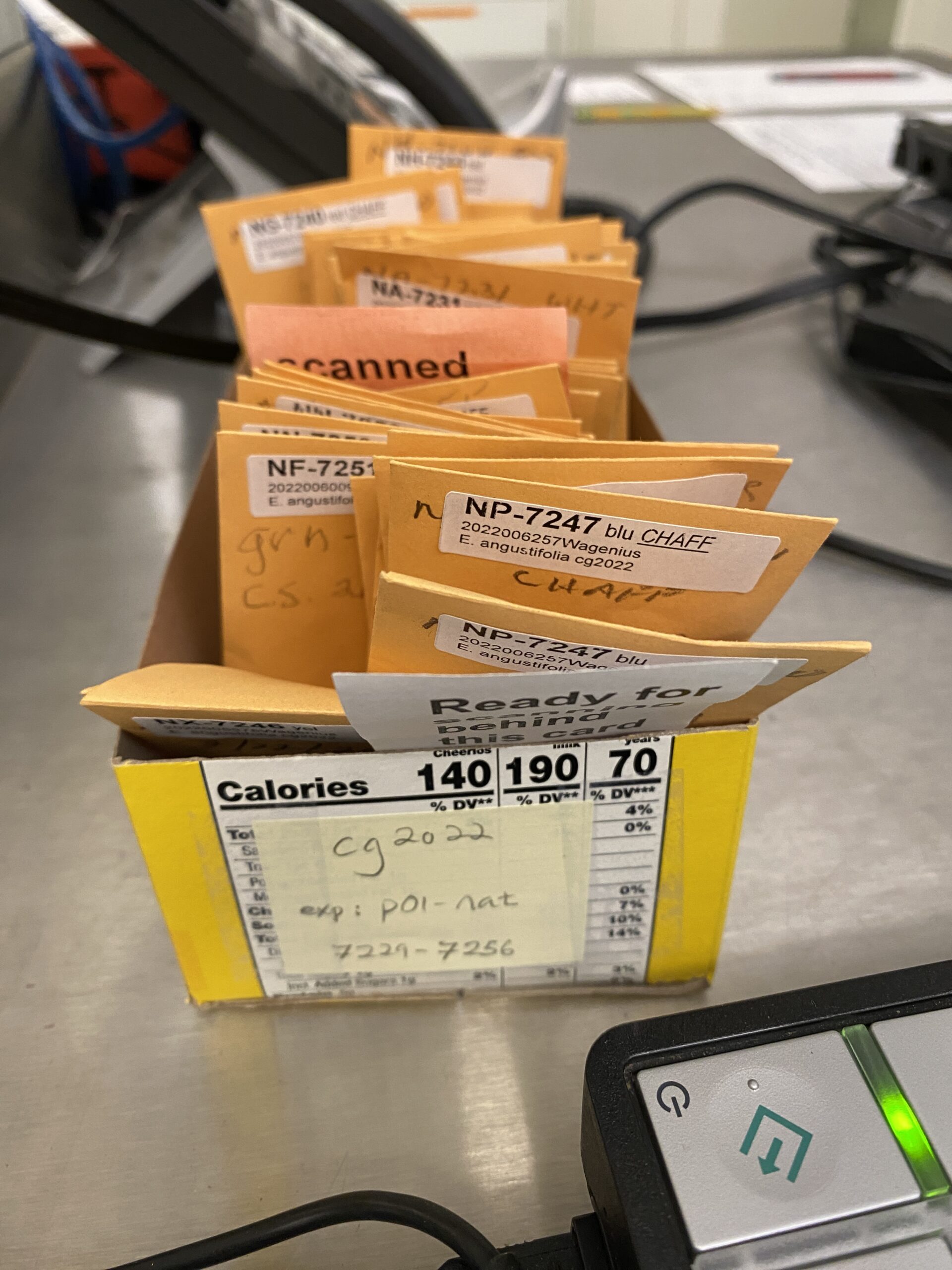For my research project, the Echinacea heads in batch P01-nat have to go through the processes of cleaning, rechecking, scanning, counting, randomizing, x-raying and finally classifying before I can analyze the data. In my last blog post I detailed the methods of randomizing, and in this one I will be describing the processes of cleaning, rechecking, and scanning, the latter two steps which I have been working on in the past couple of weeks for P01-nat.
Cleaning and rechecking are very similar processes. During the cleaning process, I gently crush the Echinacea head against a Pyrex dish to separate the achenes from the head, and I use forceps to carefully remove the achenes that don’t fall out on their own. Once all of the achenes are removed from the receptacle, I put the chaff in one envelope and achenes in another and label each envelope with my initials, the date, the twist tie color, and the contents of the envelope. I put the twist tie, empty receptacle, and the two coin envelopes in the small brown paper bag. I initial and date the data sheet next to the proper letno. The rechecking process is done to check for achenes that might have been missed during the initial cleaning. For this step, only the chaff, receptacle, and twist tie are looked at again by a second person. At the end of rechecking, letno stickers are placed on the coin envelopes and the coin envelopes are then placed in numerical order in cereal boxes in preparation for scanning (Fig. 1). The same information that was recorded in the data sheet for the cleaning is recorded again under a new column for rechecking. Stay tuned, photographs of this process will be added next week!
The method for scanning the achenes is straight forward. The scanning setup is pictured below (Fig. 1 and 2). I scan each envelope of achenes one at a time by scattering the achenes evenly on a glass bottomed scanning tray, which is placed directly on the scanner. I place the coin envelope, letno label down, underneath the scanning tray and make sure that no achenes are behind it. Each scan is done at 400dpi, and saved to the server in the P01-nat folder under the same file name as the letno in the format “N-number-letter”. Once all of the achenes in each set are scanned, they are moved to the randomizing tray, which is a process I detailed in my last post. The digital files will be uploaded to the ACE website for counting once all of P01-nat has been scanned, which could be as early as next week!



Leave a Reply